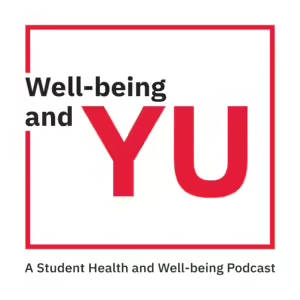
1. Sleep on big purchases
If it’s not something you need, take a week to think on it. Does this purchase come with a payment plan (e.g. a car loan) that will mess with your budget? Will this throw off your savings? How will this benefit your day-to-day life? Is the benefit worth the cost?
Weigh the benefits here to make sure it’s adding value to your life and not stress on your budget. If after the week you’ve forgotten about it, that’s a pretty good indicator that you didn’t actually need it.
2. Never spend more than you have
Getting into debt can be a vicious cycle that is tough to get out of. You end up spending more on interest than you needed to if you had held off or saved up.
If you can’t afford something you want, put it off for the next week. If you want to go on vacation, plan for it. Save regularly so it doesn’t throw off your budget.
Eating Mr. Noodles for 4 months after a vacation is probably not your idea of “living your best life.”
3. Stick to a lower credit card limit
Credit cards with high limits are easy to rack up and hard to pay down. Reduce the temptation! Keep to a lower credit limit and pay it off more frequently so you never get trapped.
A good rule of thumb is to stick to a limit that you can pay off at one time (eg. using an emergency fund). That way, you can cover your purchases with minimal or no interest while building your credit in a healthy way.
4. Budget to zero
Budgeting to zero means that when you create your budget, your income minus your expenses add up to zero.
Income – expenses = $0
When you budget to zero, you give every dollar you earn a job, even if that job is savings or an extra loan payment. You don’t give yourself a buffer or extra padding. This is a radical way to take complete control over your finances.
Budgeting to zero doesn’t mean you spend every dollar you earn. Neither does it mean that you’re stuck with your categories for the month. On the contrary, it is a great method to start a savings program by working your savings into your budget and to keep that budget flexible so it can change with the curve balls life throws at you.
5. Try a no-spend challenge
This is sometimes referred to as a spending freeze, a spending fast or a zero spend challenge. Whatever you call it, the idea is the same: a commitment to not spend money on anything that’s not a necessity.
You can do a no spend challenge for a week, a month or even a whole year! It might seem intense but it’s a remarkably effective way to shock your system, cull your spending habits and change your mindset around money.
Get started with your no spend challenge by identifying in writing what qualifies as a necessity and how long you’re going for. Make it more fun by challenging your best friends or family members and see who can save the most.
6. Stop paying for fees
Do you need a subscription to both Apple Music and Spotify? What about Netflix, Amazon Prime, Hulu, CraveTV and cable too? Probably not. All those ‘only $10 a month’ fees add up quickly.
Speaking of getting rid of fees, take a look at your banking. How much are you paying in monthly fees and how much are you paying on top of that in transactions? Consider switching to a free account like our Simply Free Account and you could save up to $200.00 per year (based on average monthly fees on products with comparable features at major Canadian banks as at October 25, 2022).
7. Plan your meals
Planning your meals and sticking to a grocery list are some of the easiest ways to keep your money in your pocket. By planning what you need for the week, you won’t overbuy items that will go bad in your fridge (and then tossing them into the garbage — a waste of food and money).
BONUS: you will probably eat healthier, too, by not buying unhealthy items that don’t fit within your meal plan. Pick fun recipes that share ingredients, that way your shopping list will line up with your budget.
8. Do your grocery shopping online
If you’ve ever shopped on an empty stomach, you know that a lot of non-necessities sneak into your cart. Sometimes, these little $2-$5 extras can take up the majority of your grocery bill.
Or have you ever done this: you go by the produce section where you’re suddenly compelled to change how you eat and throw vegetables you can barely spell in your cart only to have 75% of them sit in your fridge and go bad?
In Canada, you can shop online and pick up your groceries curb-side or even have them delivered to your home from most grocery stores. Buying your groceries online not only saves you time and trim out the spur-of-the-moment purchases. Most of the time you can also save your grocery list so you can use it for future visits, helping keep your grocery budget consistent.
9. Pay yourself first
On payday, set up some automatic transfers or put some cash aside to account for your bills, but more importantly, for YOU. If you put money into your savings, TFSA or RRSP every payday before you start spending your hard-earned cash, future-you will be quite happy.
Even small amounts will grow into something larger, which can ultimately buy that vacation or pay for that emergency engine fix on your car. Or, maybe it helps you buy a house one day?
Either way, by paying yourself first, you are making sure that you put yourself in a place of importance and recognizing that if anyone deserves your hard earned cash, it’s you.
10. Compare brands
On average, name brands cost Canadians an extra 8-9% per grocery trip than generic brands. Per item, that might not seem like that much. But on a single shopping trip, it can add up. If you’re shopping twice a month, think about how much money you’re spending on a brand name every year.
Ask yourself, is that Name Brand item really worth the extra cash? Sometimes it is worth paying a little extra for a quality item that you won’t need to replace as often. You want to make sure that you’re getting quality when you pay more and not just investing in brand real estate.
Compare the store brand and the Name Brand. If food, for example, what are the nutrients like? Are they relatively the same, with the same ingredients and values for daily intake? If so, what’s the point in spending more on essentially the exact same thing?
11. Connect your spending to your work
You work hard for your money. But rarely when spending money do people connect it to the labour that went into generating it. So you buy that pair of shoes that’s $100 without thinking too much about it.
But if you think about the labour those shoes will cost you, you might see their value in a new light.
Here’s how to do it: Calculate how much you get paid per hour. If your salary is annual, divide it by 52 weeks, then by the number of hours you work in a week. Then when you’re buying something, figure out how many hours of labour it would cost you.
So the shoes aren’t just $100. They’re 3 hours 38 minutes worth of work.
Thinking about your entire budget in this way can be a simple way to psychologically reframe the way you view money.
Bonus Tip: Treat yourself when you reach your goals
Budgeting isn’t just about discipline. It’s a tool to help you reach your goals, to do what you want to do, live the life you want to live.
So keep it fun. Gamify the process and reward yourself when you stick to your budget. It will change the way you think about budgeting, from a chore to an activity you can enjoy.
References
Valley First. (2022). Ways to stick to your budget. Valley First. https://www.valleyfirst.com/simple-advice/money/ways-to-stick-to-your-budget


